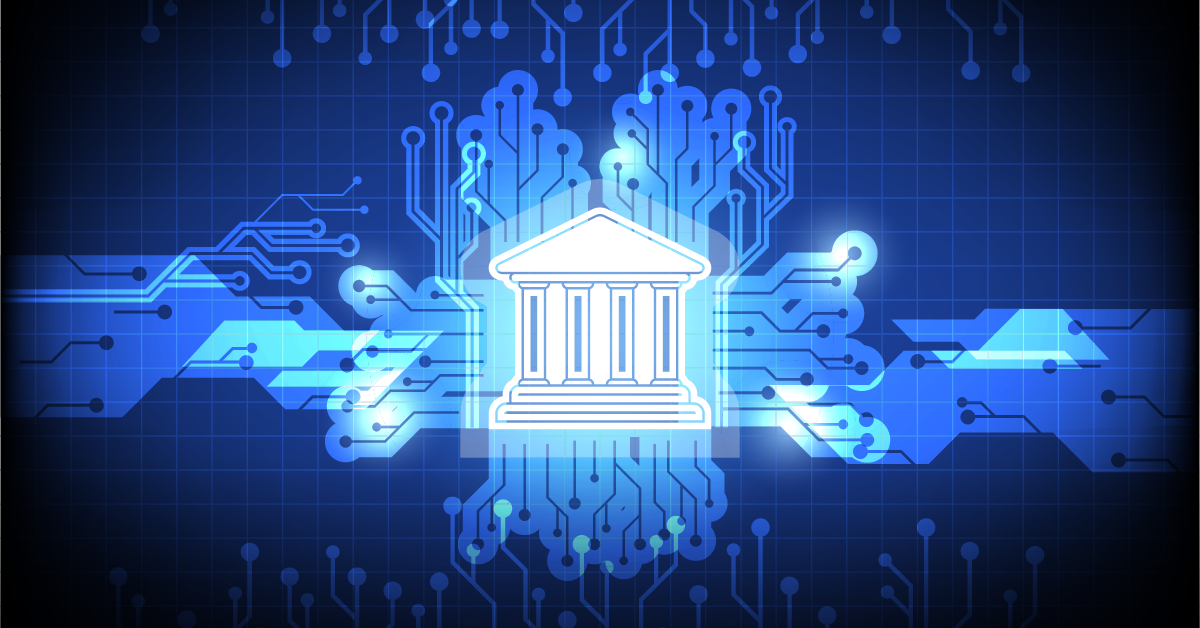All branches are becoming increasingly digitised, but the financial branch is among the leading ones for the number and the introduction of innovations into the branch. Changes in the financial industry are a consequence of the decentralisation of financial services, changes in consumers' purchasing behaviour, and an increasing number of groundbreaking innovations brought into business models by different technological companies (so-called fin-tech).

Financial and technological companies (fin-tech), based on the use of cryptocurrencies and blockchain technology, are transforming the industry with numerous groundbreaking innovations. New banks, the so-called challenger banks, are also appearing in the market.
Banks and insurance companies that are intensively considering their future and responding to these changes are already digitising: they started to expand their own capacities and competences by offering new services to their clients, using new tools and communication channels, and enabling a better and more available user experience to their clients. For them, this is the only way to move with the times and build important competitive advantages on the market.
Summary of key guidelines of the digital transformation of the financial sector
Before we delve into new rules of digital advertising in the financial sector, let us refresh the key concepts dictated by digital transformation. In this ruthless competition, the most successful financial institutions are primarily developing a completely new digital business model following the logic of “mobile comes first”, while simultaneously reinforcing the digital culture of the company and placing the buyers at the centre of their activities, trying to provide them with an above-average digital user experience.
That is to say, users expect the financial institutions to develop ways in which physically visiting their branches would no longer be a necessity or could mostly be avoided. They want to conduct most of their business on mobile phones, be it when it comes to concluding new contracts, paying, or informing themselves of the offer of the bank. What is more, users expect an impeccable user experience, an uncompromising level of security, and quick access to the information they require (e.g. via chat bots).
In addition to increasingly demanding consumers, completely new types of young banks, the so-called challenger banks, are appearing on the market: their focus is directed towards ensuring exclusively digital services and providing exceptional interaction with their clients. There are currently more than 20 such “digital” banks in Great Britain alone: they enable clients to open an account without having to visit the bank, to pay lower fees due to reduced use of infrastructure, and to manage absolutely everything through an application. And this is just the tip of the iceberg that is the digital reformation of the financial sector.

The all-connected consumer is the digital consumer
According to Business Insider, more than 40 per cent of millennials on the US market have not entered a physical location of a bank within the past 6 months, while other developed countries also display similar statistics and trends. Said trend indicates the fact that the period during which we were physically visiting banks is slowly coming to term. Nowadays, the business transactions of the financial branch are concentrated on physical branches of insurance companies and banks; in the future, however, the first point of contact will be mobile devices and connected mobile services. This is also the main reason for the digitisation of the financial industry and for finding new ways and manners to provide added value to customers. Institutions in the banking sector are rushing to develop different business models, finding possibilities for interacting with new digital technologies, and developing numerous new solutions and services in the field of mobile banking.

Digital transformation is also dictating the new rules for digital advertising
Digital transformation is a broad term, encompassing the culture of a company and the development of new digital products and business models, processes, etc. In addition to the Internet and mobile technologies, digital transformation is increasingly being driven by cryptocurrencies, blockchain technology, artificial intelligence, and other similar modern technologies.
However, digital communication and, consequentially, digital advertising is also a very important area for digital transformation. This is also proven through statistics. In 2017, digital advertising grew by 13.2 per cent in Europe and by 18.4 per cent in Slovenia. As expected, mobile advertising takes the lead: in 2017, it accounted for 65 per cent of digital advertising by growing at a rate of 9 per cent per year.
Due to the complexity of the digital environment, financial institutions are already facing a series of new challenges: how to communicate in an efficient manner with consumers in the modern digital world, if the consumers are mobile, all-connected, and exigent, placing digital products and services at the forefront while expecting to be addressed via digital channels.
The detected main challenges of digital advertising in the financial sector are the following:
- Appropriate targeting based on smart data
- Personalisation of the offer and understanding the user
- Consistent and coherent communication via all digital channels
- Reactivity on social media
- Good user experience
- Planned increase of the power of the brand through digital channels
- Advanced and, at the same time, realistic digital strategy and implementation
The most successful ones communicate through all phases of the purchase process, using a multi-channel approach
At the end of 2017, Valicon and iPROM performed a national survey focussing on the purchasing journey of Slovenian consumers: the goal of the survey was to determine the purchasing journey of Slovenian buyers and define the role of the digital channels in said journey. One of the categories they surveyed was the purchasing journey for the credit category.
When it comes to taking out a loan, digital channels play an extremely important role: before raising a credit, 87 per cent of all consumers are exposed to at least one online source of information. Online resources influence consumers during the incentive and the research phase, and also motivate them to actually complete a purchase. In order to communicate with consumers, all digital channels are important.
As an interesting fact: according to global research, the financial branch is mostly planning to increase its investment in:
- display advertising (with advanced advertising formats)
- video advertising
- social media
- mobile advertising and mobile applications
On the other hand, the survey implemented by the company e-Laborat shows that there is still room for improvement in Slovenia. As far as social media is concerned, banks mostly only communicate through Facebook. Rare are the banks with a presence on other social networks. In addition, the “non-banking” websites attract more than 50 per cent of visitors who reach them by entering a keyword related to the banking field, etc.

Smart data and their influence on user experience
Data are the fuel of digital transformation, and the financial industry is among the most advanced when it comes to processing and interpreting smart data. The leading companies of the financial branch are developing a completely new digital business model following the logic of “mobile comes first”, while simultaneously reinforcing the digital culture of the company and placing the buyers into the centre of their activities, trying to provide them with an above-average digital user experience. In these business models, the customer is king, which is why customer data is worth its weight in gold and also contributes in an important manner to shaping services, products, personalised sales offers, and communication. The role of data, i.e. being aware of behavioural patterns of users, is also of key importance when it comes to the segmented and personalised addressing of relevant target groups through ads in digital media.